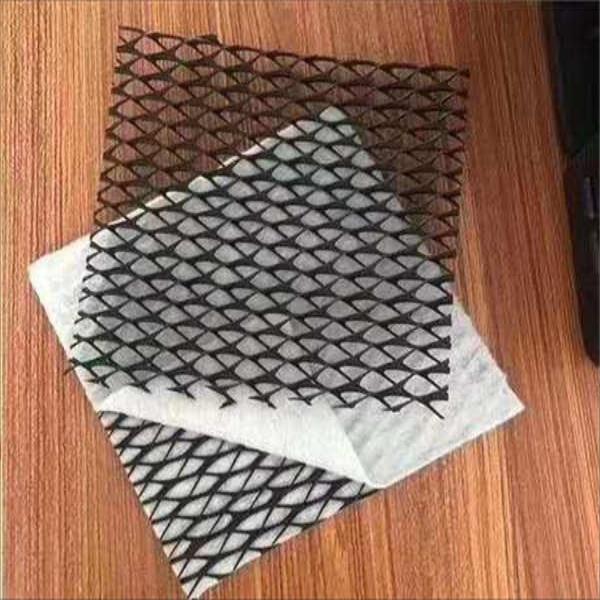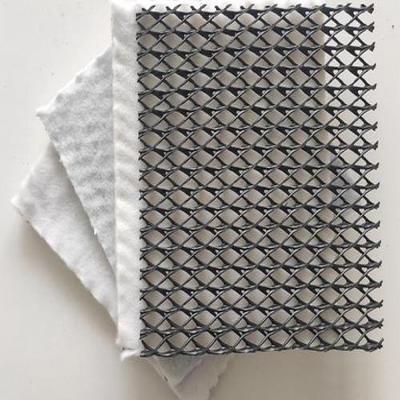Composite drainage network has very good drainage performance, high tensile strength and good durability. It is a commonly used material in highway engineering. So, what are its specific applications in highway engineering?
1. Basic characteristics of composite drainage network
The composite drainage net is made of high-density polyethylene ( HDPE) A three-dimensional network structure made of such polymer materials, and the surface is generally compounded with non-woven geotextile. It has the following basic features:
1、Excellent drainage performance: The three-dimensional network structure of the composite drainage network provides a smooth drainage channel for water, which can quickly drain excess water in the soil and keep the roadbed dry and stable.
2、High tensile strength: The material itself has high tensile strength and can withstand the stress caused by subgrade deformation and vehicle load, which can ensure the long-term stability of the drainage system.
3、Good durability: The composite drainage network has the characteristics of corrosion resistance, acid and alkali resistance, and anti-aging. It can be used for a long time under harsh environmental conditions and prolong the service life of the road.
2. Application scenarios of composite drainage network in highway engineering
1、Subgrade drainage
In highway subgrade construction, composite drainage network is often laid on the bottom or slope of subgrade, which can drain groundwater and rainwater, and prevent the road gene from softening and settling due to water accumulation.
2、Slope protection
In the highway slope, the composite drainage network can not only drain water, but also strengthen the slope and prevent soil erosion. Combined with vegetation, it can form ecological slope protection and improve the stability and aesthetics of the slope.
3、Drainage of pavement structure layer
In the pavement structure layer, the composite drainage network can be laid between the base layer and the sub-base layer, which can discharge the accumulated water between the layers and prevent pavement diseases caused by accumulated water, such as cracks, pits, etc. The smoothness of the road surface and the running comfort can be improved.
3. Advantages of composite drainage network in highway engineering
1、Improve road stability: Through effective drainage, the composite drainage network can reduce the occurrence of roadbed and pavement diseases and improve the overall stability of the road.
2、Extend service life: The durability and anti-aging properties of the composite drainage net allow it to maintain a stable drainage effect for a long time, which can extend the service life of the road.
3、Simple construction: The composite drainage network is soft in texture, easy to lay and cut, and has high construction efficiency, which can shorten the construction period and reduce the cost.
4、Environmental protection and energy saving: The production and use of composite drainage networks have little impact on the environment and meet the environmental protection requirements of modern engineering construction.
Post time: Apr-23-2025





